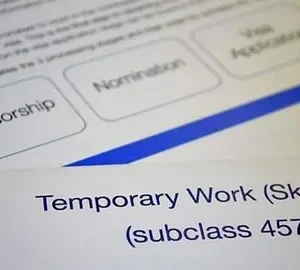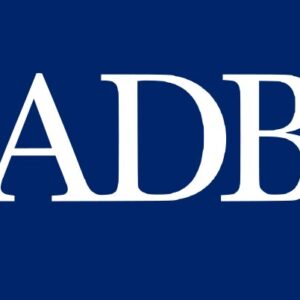Are you one of the millions of talented professionals globally dreaming of a career in the United States? Chances are, your job search has led you down an endless rabbit hole, searching for that one elusive document: The Secret List of U.S. Employers Sponsoring Foreign Workers in 2025.
Here’s the harsh, but necessary, truth: There is no secret list. The idea that a hidden file of visa-sponsoring companies exists—one that only a select few insiders share—is a pervasive and dangerous myth. It’s a myth that keeps hopeful candidates focused on the wrong things, wasting precious time and energy on a fantasy while the real, publicly available data is screaming the answers.
This article is designed to cut through the noise, reveal why this myth persists, and, most importantly, equip you with the actual, official data on which U.S. employers sponsored the most work visas in 2025. Forget the secrets; focus on the strategy. Your future career in the U.S. depends on understanding the real landscape, not chasing a fictional list.
Why the Myth of the “Secret List” Persists
The allure of a secret list is powerful because the U.S. work visa process is, frankly, intimidating. The most common visa for highly-skilled workers is the H-1B visa, a temporary nonimmigrant classification that allows U.S. employers to hire foreign workers in “specialty occupations.” Securing one involves complex legal applications, a government lottery, and substantial costs borne by the employer.
The Real Reasons Employers Don’t Publicly Advertise Sponsorship
If the data is public (which we’ll prove it is), why don’t companies just state clearly in every job posting that they sponsor visas? The reasons are rooted in risk, compliance, and cost.
-
Financial Burden: The cost to file and sponsor an H-1B or a Green Card can easily climb to tens of thousands of dollars per employee, especially when factoring in the new governmental and legal fees. For instance, new fees and restrictions implemented recently have further raised the cost, with legal and processing expenses reaching up to $50,000 per employee over several years, particularly when including green card sponsorship costs. This enormous investment means employers only want to sponsor a candidate they are extremely confident in.
-
Legal Compliance and Scrutiny: The process is heavily regulated by the U.S. Department of Labor (DOL) and U.S. Citizenship and Immigration Services (USCIS). Every application carries the risk of audit or denial. Companies, especially those that sponsor frequently, are under high scrutiny to prove they are paying prevailing wages and not displacing U.S. workers.
-
Managing Applicant Volume: If every job posting included “Visa Sponsorship Available,” the volume of unqualified applications would become unmanageable. Companies prefer to filter candidates based on merit and specialized skills first, before even discussing the complex immigration logistics.
This corporate preference for efficiency and risk mitigation, combined with the genuine complexity of the system, creates the illusion that the sponsorship list is a guarded secret.
Uncovering the Real List: Where to Find Official U.S. Employer Sponsorship Data
The “secret list” is not hidden in a corporate vault; it’s right in front of you, published by the U.S. government. For all major employment-based visas—H-1B, H-2A, H-2B, and the first step of the Green Card process (PERM Labor Certification)—the U.S. Department of Labor (DOL) requires employers to file an application and disclose crucial information, all of which is publicly available.
The Two Major Government Data Sources
-
U.S. Department of Labor (DOL) Disclosure Files: Before an employer can file an H-1B petition with the USCIS, they must first file a Labor Condition Application (LCA) with the DOL. The DOL publishes this extensive data on all employment-based immigration applications. This LCA data is a treasure trove of information, detailing the employer’s name, the job title, the location, and the prevailing wage offered. You can access these credible sources directly through the DOL’s Office of Foreign Labor Certification (OFLC) disclosure data files, which is the most reliable way to verify sponsorship activity.
-
U.S. Citizenship and Immigration Services (USCIS) Reports: While the USCIS doesn’t publish a running list of all active sponsors, they release statistical reports detailing the number of approved petitions by employer. Analysts and organizations, such as the National Foundation for American Policy (NFAP), compile and interpret this raw data, making it the most direct source for identifying the top sponsoring companies in a given year, like 2025.
The Game-Changer: Top Sponsoring Industries in 2025
The key takeaway from the 2025 data is a dramatic shift in who is sponsoring the most new H-1B workers. For the first time, four U.S.-based technology companies dominated the top four positions for approvals of initial employment petitions, driven largely by massive capital expenditures in areas like artificial intelligence (AI).
This shift indicates that the employers willing to take on the cost and complexity of sponsorship are those with the most critical, high-skilled talent gaps, primarily in cutting-edge technology fields.
The Dominating Sectors: U.S. Employers Sponsoring Foreign Workers in 2025
The data for Fiscal Year (FY) 2025 reveals a distinct change in the H-1B landscape, moving away from traditional IT consulting/outsourcing models and toward U.S. domestic technological innovation.
The Big Four: Tech Giants Lead the Charge
The largest US-based technology companies secured the most approvals for new H-1B visas in FY 2025. This surge is directly linked to their enormous investments and critical need for highly educated foreign professionals to fuel growth in AI, cloud computing, and advanced engineering.
| Rank | Company / Employer (Initial Approvals FY 2025) | Primary Industry | Approximate Initial Approvals | Key Insight |
| 1 | Amazon | Technology/Cloud | 4,644 | Consistently the largest sponsor, across various entities (AWS, Retail, etc.). |
| 2 | Meta Platforms (Facebook) | Technology | 1,555 | Doubled its tally from the previous year, highlighting aggressive hiring. |
| 3 | Microsoft | Technology | 1,394 | Strong focus on AI and Cloud (Azure) engineering roles. |
| 4 | Technology | 1,050 | Continued high demand for software engineers and data scientists. | |
| 6 | Apple | Technology | 823 | Key areas include hardware engineering and specialized software. |
Data compiled from NFAP analysis of USCIS FY 2025 H-1B approval data.
Consulting and Financial Services: The Perpetual Sponsors
Beyond Big Tech, the professional services and financial sectors remain consistent and significant sponsors of foreign talent, often hiring for roles in data analysis, risk management, and IT consulting. They typically sponsor for roles like Accountants and Auditors, Financial Analysts, and Management Consultants.
Top employers in these fields for 2025 included:
-
Professional Services: Ernst & Young (EY), Deloitte, Cognizant Technology Solutions
-
Financial Services: Goldman Sachs, JPMorgan Chase, Walmart (for corporate/tech roles)
The Strategic Pullback of Indian IT Firms
A major trend in the 2025 data is the sharp decrease in new H-1B filings by India-headquartered IT companies. Firms like Tata Consultancy Services (TCS), Infosys, and Cognizant, which once dominated the top ranks, have significantly reduced their reliance on new H-1B filings for initial employment.
This strategic shift is attributed to:
-
Local Hiring: Increased recruitment of U.S. domestic talent.
-
Global Delivery: Expanding offshore delivery centers and remote work capabilities from countries like India and Eastern Europe.
-
Automation/AI: Reduction in demand for some traditional IT roles due to technology automation.
While these firms remain huge sponsors for continuing employment (renewals), their willingness to sponsor new foreign hires has become much more selective. This means candidates must focus their search on roles that genuinely require a specialty occupation degree and high salary, rather than relying on volume-hiring models.
The Secret Strategy: Finding Companies Sponsoring Green Cards (The Long Game)
While the H-1B is the most common temporary work visa, many professionals seek permanent residency (a Green Card). The main employment-based Green Card process (PERM Labor Certification) is also public, and searching this data reveals a different, often surprising, list of employers.
The Dual Sponsorship Mindset
Employers that sponsor H-1B visas are often the most likely to also sponsor a Green Card down the line, but the two processes require different strategic thinking.
-
High-Skill/EB-2 (Advanced Degrees): Companies sponsoring H-1B in cutting-edge fields (like the Big Tech companies) are often simultaneously initiating the Green Card process for their key talent. This sponsorship is for highly skilled roles requiring advanced degrees, such as Software Engineers, Research Scientists, and Data Engineers.
-
Lower-Skill/EB-3 (General Workers): Surprisingly, the public data reveals that many companies sponsor for EB-3 Green Cards, which include skilled, professional, and even unskilled workers. These sponsorships are often for high-demand, high-turnover roles that employers struggle to fill locally.
Surprising Green Card Sponsors in 2025
While H-1B sponsors are concentrated in tech, Green Card sponsors cover a much broader, more unexpected range, demonstrating an acute need for specific workers across the U.S. economy. Public filings in 2025 have shown sponsorship activity from franchises in:
-
Hospitality/Food Service: McDonald’s, Bojangles, Dairy Queen (primarily for crew/fast food members)
-
Construction/Trade: Truck Drivers, Commercial Roofers, Construction Laborers
-
Healthcare: Physical Therapists, Registered Nurses, Medical Assistants
This is due to the requirements of the DOL’s PERM process, which allows companies to sponsor foreign workers for permanent residency if they can prove a lack of qualified U.S. workers for a specific role.
The key difference? H-1B is about specialized skills (AI Engineer). Green Card PERM is about unfillable labor gaps (Truck Driver in a specific region). If you are looking for a job that leads to long-term residency, exploring the amazing DOL disclosure data is your most powerful tool.
Your Action Plan: Moving Beyond the Secret List
Chasing a fictional secret list of U.S. employers is a passive activity. Securing visa sponsorship requires a pro-active, targeted, and data-driven approach.
1. Target the Right Industries, Not Just Companies
Your best chance of securing a visa lies in working for a company that has a high volume of sponsorship because their business model demands specific foreign talent.
-
Tier 1: High-Volume Tech/Innovation: Focus on major technology, finance, and professional services firms. They have the legal teams and financial bandwidth to handle the sponsorship costs.
-
Tier 2: Specialized/Critical Industries: Research companies in fields like semiconductors (e.g., Intel, Nvidia), specialized healthcare, and bio-tech. Their need for niche, advanced skills often overrides the cost barrier.
-
Tier 3: The Long-Game (PERM): If your goal is a Green Card and you have skills in persistent labor shortage areas (e.g., nursing, specific trades), use the DOL data to find the mid-size and local businesses that are actively filing PERM applications.
2. Master the Search: Use Official Data Sites
Stop relying on aggregated, outdated blog posts. Use the official or official-data-driven websites to search for active sponsors.
-
H1B Grader and MyVisaJobs: These private sites analyze and organize the raw DOL and USCIS data into searchable, user-friendly databases. You can search by job title, company name, or location to see actual LCA and sponsorship filings. This allows you to verify, for example, which companies sponsored Software Engineer roles in New York in 2025.
-
LinkedIn/Job Boards: Don’t just search for “visa sponsorship.” Search for companies that appear on the official top sponsor lists (Amazon, Meta, Google) and then look for their job postings. If a company is sponsoring thousands of visas, you know they have the infrastructure.
3. Focus on Your Value Proposition
The new H-1B landscape—with increased costs and stricter scrutiny—means that employers must be convinced that you are worth the investment.
-
Highlight Niche Skills: If you are an AI/Machine Learning specialist, a cloud architect, or a financial risk analyst with a unique certification, your value proposition is clear.
-
Education and Salary: Government data for FY 2024 shows that H-1B workers in computer-related jobs had an average annual salary of $136,000, with 63% holding a master’s degree or higher. To stand out, ensure your skills and desired salary reflect this high-value talent pool.
-
Networking is Critical: In an environment where the employer takes a significant financial and legal risk, an internal referral from a trusted employee is golden. Networking is often the real secret key to securing a sponsorship, providing the human trust factor the company needs.
Conclusion: Knowledge is Your Only Competitive Advantage
The myth of the “Secret List of U.S. Employers Sponsoring Foreign Workers in 2025” is a distraction. The reality is far more encouraging: the data is public, searchable, and it tells a clear story.
The top U.S. employers are not hiding; they are loudly proclaiming their need for specialized foreign talent by filing thousands of visa applications with the U.S. government. From the tech titans driving the AI boom (Amazon, Microsoft, Meta) to the professional services firms requiring global consultants, the opportunities are there—but they demand a strategic, informed approach.
Stop waiting for a “secret list” to be handed to you. Use the official data, target the industries that have demonstrated a genuine need for your specialized skills, and make your application so compelling that the employer sees the huge benefit of making that investment.
The key to your U.S. career is not a secret; it’s strategic insight and unrivaled talent.





